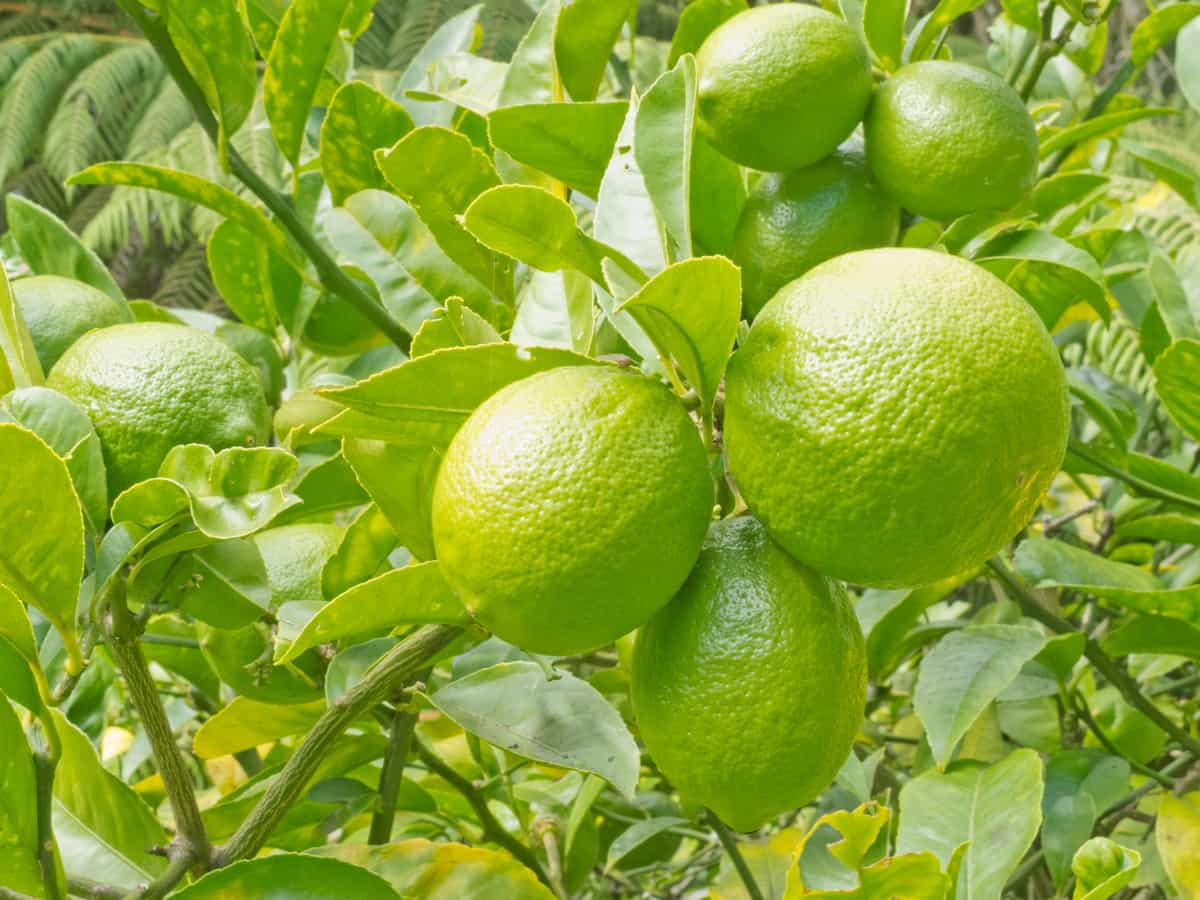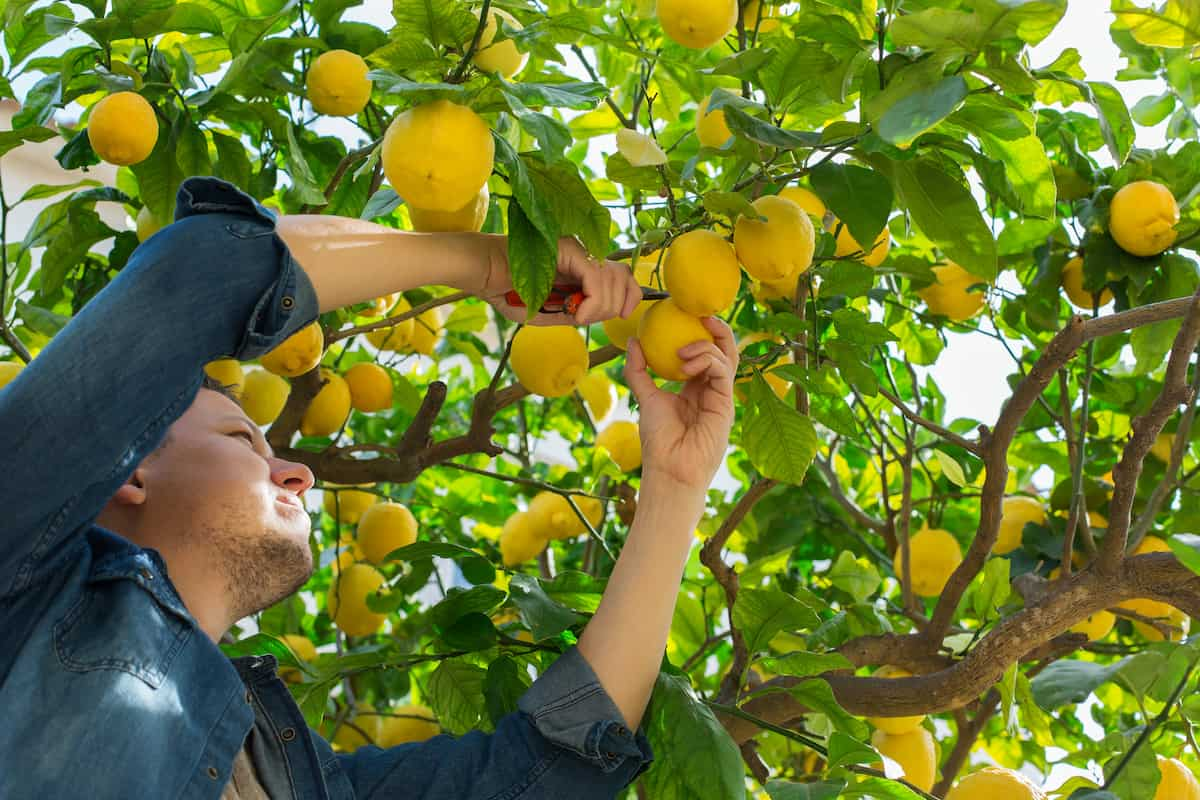Are you considering cultivating lemons on a 1-acre plot or more land but need help to maximize your yield and profits? Look no further! This blog post will provide tips and strategies for successful 1-acre lemon cultivation, including selecting the right variety, implementing effective irrigation and fertilization techniques, managing pests and diseases, and harvesting at the optimal time. We’ll also share a real-world project report outlining the production costs of 1-acre lemon cultivation and a case study of a farmer who has succeeded with these strategies.

1-Acre Lemon Cultivation Project Report
Introduction to Lemon Farming
Lemon farming is the cultivation of lemon trees to produce lemons, which are a type of citrus fruit. Lemon farming is an important agricultural practice, and lemons are widely used for culinary and non-culinary purposes. In India, Nagpur Santra, a type of mandarin, is grown on a large scale, and lemon cultivation is also popular in other parts of the world with suitable climate conditions. The total cost of production per acre can vary depending on factors such as land cost, labor, fertilizers, irrigation, pest management, and harvesting.
On average, the total cost of production for 1 acre of lemon farming can range from $2,000-$4,500 (INR 1,20,000-3,50,000). Despite the initial investment, lemon farming can be a profitable long-term investment, as lemon trees have a 15-20 years productive lifespan. Farmers can maximize their profits and enjoy a successful lemon farming venture with the right cultivation techniques and marketing strategies.
Market and Demand for Lemon Cultivation
The market and demand for lemon cultivation are strong in India and other parts of the world. Lemon is a popular fruit in various food and beverage products, including juices, sauces, and seasoning. The global demand for lemons has been steadily increasing, with the market expected to reach $7.6 billion by 2027. In India, citrus cultivation is done on an area of about 923 thousand hectares, with an annual production of 8608 thousand metric tons.
Lemon is a major citrus fruit crop in India, with the states of Maharashtra, Gujarat, and Andhra Pradesh being the major lemon-producing regions. In Punjab, citrus fruits, including lemons, are grown on 39.20 hectares of land, with an annual production of 79.34 metric tons. The food and beverage industry, as well as the pharmaceutical and cosmetic industries, which use lemon extracts for their products, primarily drive the demand for lemon in Punjab.
Best Lemon High Yield Variety for Lemon Cultivation
- Eureka lemon – A popular variety of lemons, Eureka is known for its high yield and excellent fruit. It is adaptable to various climates and soil types, making it a good choice for farmers in different regions.
- Lisbon lemon – Another high-yield variety, Lisbon produces large, juicy fruit with thick skin. It is commonly used for making lemon juice and zest.
- Rough lemon – This variety is hardy and can withstand drought and other adverse conditions. It produces a high yield of smaller-sized fruit, making it a good choice for commercial growers.
- Kaghzi nimbu – A popular Indian variety of lemon, Kaghzi Nimbu produces high-quality fruit with thick, rough skin. It is known for its distinctive flavour and aroma, making it a popular choice for culinary uses.
- Gondal lemon – This highly productive variety produces large, juicy fruit with a thin skin. It is commonly used for making lemon juice and is popular in the Indian market.
Best Commercial Package and Practices for Lemon Farming
- Soil requirement: Lemons can be grown in various soils, including slightly alkaline and acidic soils, but light soils with good drainage are the most suitable. The recommended pH range for lemon cultivation is 5.5-7.5.
- Land preparation involves proper ploughing, cross-ploughing, and leveling. Planting can be done on terraces against slopes in hilly areas, and high-density planting is possible in such areas.
- Sowing season: The best time to sow lemon is during July-August, and intercropping with cowpeas, vegetables, and French beans can be done in the first two to three years. The minimum plant density of 208/acre should be maintained, and spacing between plants should be kept at 4.5×4.5. Propagation is done by budding or air layering.
In case you missed it: 1 Acre Papaya Cultivation Project Report: A Guide to Cost and Profit Analysis

Pruning and training: Proper pruning and training are essential for the growth of lemon trees. Shoots within 50-60cm near ground level should be removed, and the centre of the plant should remain open. Water suckers should be removed during the early stages of growth.
Fertilizer application should be made according to the age of the crop. When the crop is 1-3 years old, well-decomposed cow dung should be applied at 5-20kg per tree and urea at 100-300gm per tree. For a 4-6-year-old crop, use well-decomposed cow dung at 25-50kg and urea at 100-300gm per tree. For a 7-9-year-old crop, apply urea at 600-800gm per tree and well-decomposed cow dung at 60-90kg per tree. When the crop is ten years old or above, use cow dung at 100 kilograms or urea at 800-1600gm per tree. The whole amount of cow dung should be applied during December, and the urea should be involved in two parts, the first in February and the second in April-May.
Weeb management: Both hand-hoeing and glyphosate can chemically control weeds. Irrigation at regular intervals is necessary for flowering, fruiting, and proper plant growth. Over-irrigation may lead to diseases like root rot and collar rot.
Lemon plant protection and management: In lemon farming, Citrus Psylla and Leaf miners are common insect pests that can be controlled through pruning, burning, and chemical sprays. The Leaf roller can also be managed through pruning and chemical sprays. Citrus Canker and Citrus Scab are bacterial and fungal diseases that can cause reduced yield and fruit quality.
Harvesting and storage: Lemon trees take 3-5 years to bear fruit after planting. The fruits mature in 8-12 months after flowering. The fruit is harvested when it has turned yellow, and it should be harvested carefully by hand to avoid damage to the fruit. The harvested fruits should be graded and sorted, and the damaged or diseased fruits should be discarded. The harvested fruits should be stored in a cool, dry, and well-ventilated place.
Yield: 1 acre lemon cultivation yields 55-70 fruits per tree in the fifth year and 1000-1500 in the eighth year.Lemons last 15-20 years economically. Lemons can be storage for 6-8 weeks at 10–11 oC. Waxing may extend shelf life. Below 7oC, limes pit.
Marketing: Lemons are in high demand in the food industry for their flavour and health benefits. The best marketing strategy for lemon farming is to sell the fruits directly to wholesale markets, local shops, and consumers. The farmer can also establish a small processing unit to make lemon juice, oil, and other value-added products.
Lemon Farming Project Report: Cost of Cultivation for 1-Acre Lemon Cultivation
- Land preparation: The cost of land preparation is INR 2,500, a one-time expense.
- Digging and filling up pits: The cost of digging and filling up pits is INR 4,000, a one-time expense.
- Plant material: The cost is INR 9,060, a one-time expense.
- Planting and staking: The cost of planting and staking is INR 2,000, a one-time expense.
- Cost of FYM: FYM (Farm Yard Manure) costs INR 7,200 per year, and the total cost for five years is INR 31,200.
- Cost of fertilizers: The cost of fertilizers is INR 1,030 for the first year, increasing yearly. The total cost for five years is INR 15,810.
- Manures & fertilizers application: The cost of manures and fertilizers application is INR 2,000 per year, and the total five-year cost is INR 15,000.
- Irrigation: The cost of irrigation is INR 2,000 for the first year, increasing yearly. The total cost for five years is INR 21,000. Drip installation is highly recommended.
- Plant protection measures: The cost of plant protection measures is INR 1,750 for the first year, increasing yearly. The total cost for five years is INR 12,250.
- Application of plant protection: The cost of applying plant protection measures is INR 400 for the first year, increasing yearly. The total cost for five years is INR 6,000.
- Harvesting: The cost of harvesting is INR 0 for the first three years, starting from the fourth year. The total cost for two years is INR 8,000.
The total cost of cultivation for 1-Acre Lemon cultivation for five years is INR 1,26,000-2,00,000 ($1,620-$2,570)
Total Returns from 1 Acre Lemon Cultivation
- At first 2-3 years of age, lemon trees will have between 50 and 60 fruits per tree.
- The average yield per tree is 100 kg, and the Avg price of 6262.00 INR/Quintal.
- One acre can have a plant density of 200-220/acre. Average production increased to around 700 fruits per tree after stabilization (After 7-8 years).
- The total returns from 1-acre lemon cultivation with a plant density of 200-220 trees per acre can be between INR 6,62,000 to INR 7,67,200($8,824 to $10,235) in the first 2-3 years INR 23,27,200 to INR 27,00,800 ($30,312-$34,000) after 7-8 years.
Net Profit from 1-Acre Lemon Cultivation
The Net Profit from 1-acre lemon cultivation can be calculated by subtracting the total cost of cultivation from the total returns. Based on the data provided, the net Profit for the first 2-3 years can be between INR 4,35,800 to INR 5,41,200 ($5,655 to $7,665). And this with Double and can tripe after 7-8 years.
Challenges and Risks in Lemon Cultivation
- Citrus pests and diseases can affect the yield and quality of lemon fruit.
- Erratic weather conditions such as drought, floods, or frost can negatively impact the lemon trees.
- Market fluctuations can result in unstable prices for lemon fruit.
- High initial investment costs in planting and maintaining the lemon orchard can be a barrier to entry for some farmers.
- The availability of skilled labour for managing and harvesting the lemon crop can be challenging in some regions.
In case you missed it: 1-Acre Amla Cultivation Project Report: A Comprehensive Guide to the Production Cost and Profit

Conclusion
Maximizing your harvest in 1-acre lemon cultivation requires careful planning, efficient management, and diligent attention to detail. By implementing the best practices and strategies outlined in this report, farmers can increase their profits and achieve a successful lemon farming operation.
- Feed Your Flock for Less: Top 10 Tips to Save on Chicken Feed
- Ultimate Guide to Ossabaw Island Hog: Breeding, Raising, Diet, and Care
- Hatching Answers: The Top 10 Reasons Your Chickens Aren’t Laying Eggs
- Eggs and Economics: Breaking Down the Cost of Raising Backyard Chickens
- Defend Your Greens: Proven Methods to Keep Iguanas Out of Your Garden
- Ultimate Guide to Cinnamon Queen Chicken: A Comprehensive Guide for Beginners
- Ultimate Guide to California Tan Chicken: Breeding, Raising, Diet, Egg-Production and Care
- Ultimate Guide to Marsh Daisy Chicken: Breeding, Raising, Diet, and Care
- 10 Types of Chicken Farming Businesses You Can Start for Profits